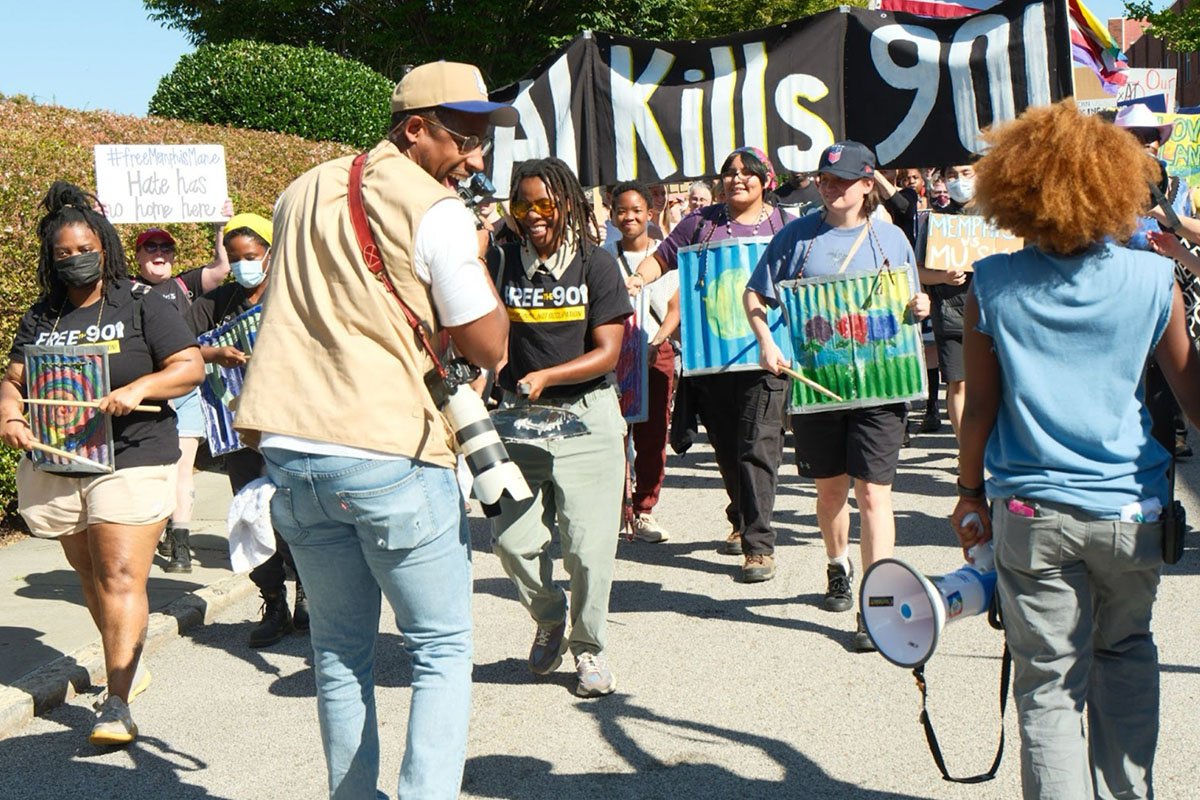
After a Supreme Court decision handed down on June 27, “Americans will continue to be exposed to higher levels of ground-level ozone, resulting in costly public health impacts that can be especially harmful to children and older adults.”
That’s what Environmental Protection Agency (EPA) spokesperson Timothy Carroll told the AP following the high court’s block of the “Good Neighbor” pollution rule. The rule was intended to reduce emissions from factories and other industries with drifting downwind or downstream pollution. The hold on the rule is part of a trend; according to the AP, “The high court, with a 6-3 conservative majority, has increasingly reined in the powers of federal agencies, including the EPA, in recent years.”
“This court is no longer neutral in cases involving environmental regulations.”
The reduction of the EPA’s authority has severely limited the federal agency’s abilities to combat air and water pollution or carbon emissions against the backdrop of ever-escalating climate events—and at a time when Americans view the Supreme Court in historically low favor.
The Legacy of the Clean Air Act
Perhaps overshadowed by the Supreme Court’s decision on presidential immunity on July 1 was the court’s ruling just days earlier on the “Good Neighbor” rule.
But according to Sam Sankar, senior vice president for programs at the environmental law nonprofit Earthjustice, the pollution ruling indicates that “this court is no longer neutral in cases involving environmental regulations.” Sankar told Mother Jones that the Supreme Court is demonstrating it is “actively skeptical of EPA and new environmental regulations.”
The history of the “Good Neighbor” rule is tied to the Clean Air Act, enacted in 1970. The Clean Air Act developed major state and federal regulations aimed at curbing air pollution, which in the 1970s, after decades of industrialization, made the air so smoggy at times you could reach out and touch the pollution in the air. A 2015 update to the act restricted ozone levels on the federal level. Included in the 2015 revision was a requirement for states to submit details for their plans to reduce pollution from coal plants and other industries in order to protect communities downwind from these ozone-forming emissions.
“The trouble with air pollution is that it tends to travel—blowing downwind for hundreds of miles, entering the lungs of people living far from its source.”
“Twenty-one states submitted plans indicating that they would do nothing, while Pennsylvania and Virginia didn’t offer [a plan] at all,” according to Mother Jones. As NPR reported, “In February 2023, the EPA determined that 23 states had not provided sufficient plans and the agency then decided to implement its own emissions-control program for those states.”
That’s where the trouble began.
Multiple states joined with fossil fuels groups to file dozens of lawsuits protesting the EPA-directed programs. The “Good Neighbor” rule was put on hold in 12 states, and earlier this summer, three states known as top energy producers—Ohio, West Virginia, and Indiana—challenged it before the Supreme Court with the backing of the US Steel corporation and other oil and gas companies. At the time, according to the AP, “the Supreme Court’s conservative majority seemed skeptical” of the EPA’s rule.
Sign up for our free newsletters
Subscribe to NPQ's newsletters to have our top stories delivered directly to your inbox.
By signing up, you agree to our privacy policy and terms of use, and to receive messages from NPQ and our partners.
That insight proved to be correct.
Miles Away but Still At Risk
What does the block of the “Good Neighbor” rule mean for people living miles and even states away from pollution-producing plants? In the United States, up to 65 percent of a state’s pollution actually comes from other states. As Grist wrote, “The trouble with air pollution is that it tends to travel—blowing downwind for hundreds of miles, entering the lungs of people living far from its source.”
One of those people is Amy Kelly. As she wrote in an op-ed for the Sierra Club, “My roots are in the town of Kingsport, [TN], but toxic air pollution from power plants keeps me from living in my hometown.” Now Kelly lives with her family in Maryville, TN, almost two hours away, but, she writes, “I still haven’t escaped all the impacts of harmful pollution. Much like me, my daughter struggles with asthma, and we’ve both spent sleepless nights struggling to breathe.”
Kelly supported the “Good Neighbor” plan and spoke in favor of it for the EPA’s public hearing on the issue. Importantly for her, the rule protected people “who are unknowingly subjected to toxic emissions from plants often hundreds of miles away.”
Pollution is a concern not only for the air but for the water residents depend on for drinking and sustaining life.
Ariel Solaski is director of litigation for the Chesapeake Bay Foundation, an independent conservation organization, which has been working to defend the “Good Neighbor” rule since June 2023. Solaski said in a statement, “The health of the Chesapeake Bay ecosystem and the people living in its watershed depends on clean air. This assault on the EPA’s Good Neighbor Plan puts public health at risk and undermines the progress being made restoring the Bay and its tributaries.”
Over 18 million people depend on the Chesapeake Bay Watershed for drinking water and seafood. Nineteen percent of the nitrogen and phosphorus polluting the waters of the Chesapeake Bay comes from air pollution.
What’s Next for “Good Neighbor”
What’s the future of the “Good Neighbor” rule? The EPA can no longer enforce the rule, and the Supreme Court has sent the case back to the US Court of Appeals for the District of Columbia Circuit. EPA spokesperson Carroll told the AP that such action is halting “the benefits that the Good Neighbor Plan is already achieving in many states and communities,” including limiting poisonous nitrogen oxide emissions.
The blocking of the rule was viewed as a victory for the fossil fuel and manufacturing industries, which are able to continue polluting unhindered, often not knowing where or how far the pollution from their operations might spread. Rich Nolan, president and CEO of the National Mining Association, told the AP he felt the Supreme Court “recognized the immediate harm to industry and consumers posed by this reckless rule.”
But by EPA estimates, if the rule had been allowed to stand, in 2026 alone it would have prevented about 1,300 premature deaths, more than 2,300 hospital and ER visits, and 1.3 million asthma cases.











